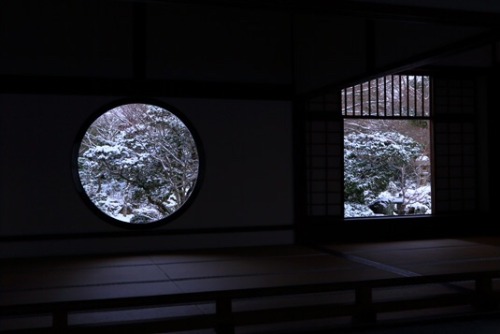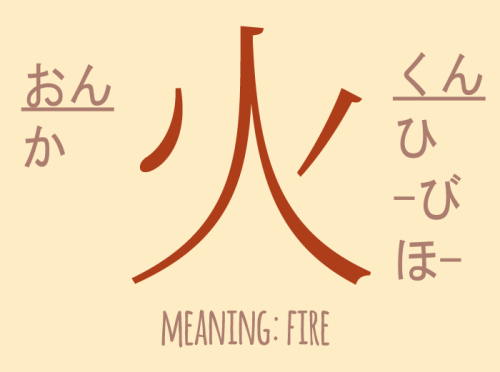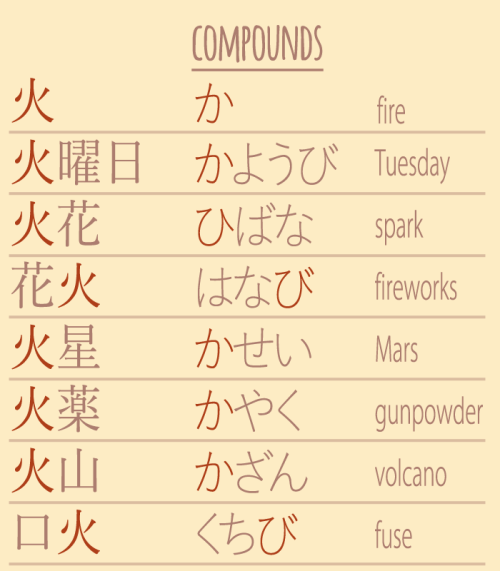落ち葉 (おちば) • Fallen Leaves

random word of the day
落ち葉 (おちば) • fallen leaves
More Posts from Earthquakedeer and Others



Genko-an Temple (Kyoto,JAPAN)
Summer/Fall/Winter

JLPT | 日本語能力試験 Hey guys, throughout my time running this studyblr I’ve received a lot of questions regarding the JLPT exam. Personally, I myself have never taken the exam nor am I planning on doing so in the near future, however I have asked my closest friends around me who have taken the exam in the past, or who are currently studying for it, for advice regarding how to prepare for the exams. So below is some advice, information, and resources that I’ve gathered over time. I hope it’ll be able to help answer some of your questions! What is the JLPT and why is it important? The Japanese Language Proficiency Test is an internationally recognised exam that measures the proficiency of non-native Japanese speakers. There are five levels, N5, N4, N3, N2, and N1. N5 is the lowest level, which is equivalent to basic conversational Japanese skills, and N1 is the highest level, equivalent to that of a native speaker. The JLPT is important say for example, if you plan on working in Japan in a job that requires you to use Japanese. How can I take the JLPT? The test is held twice a year (July and December) in some cities, and just once a year in other cities (December). On the official website is a list of institutions that hold the JLPT. Which level should I take? You can attempt sample questions from the different levels on the official website in order to understand which level you are. What will I be tested on? The JLPT tests examiners on their vocabulary, grammar, reading, and listening skills. For a full view of all the items you will be tested on, check out the official website for more information. How should I study for the JLPT? There are a lot of websites online with information, resources, and study-guides for each level of the JLPT. This website hosts pdfs with practice tests, official workbooks, mock tests, and answer sheets for each level of the JLPT. It’s a good idea to purchase a textbook so that you can learn new vocabulary, grammar, and kanji, as well as get in some reading practice or practice exercises. - For N5/N4 I can recommend the Genki series or Minna no Nihongo. - For N3 Jitsuryoku Up! Nihongo Nouryoku Shiken has been recommended. - For N2/N1 日本語総まとめ and Kanzen Master (新完全マスター) books have been recommended. I’ve been told kanji is used quite sparingly in the N5/N4 exams, so I’ve been advised that you shouldn’t spend all of your time studying kanji for those exams. A good idea is to focus on the recommended kanji for each level, and spend more time on vocabulary, grammar, and more time on reading and listening comprehension. You should try to study every day if possible. Studying/cramming for a certain amount of hours in just one session each week is not a good way to retain information. You don’t have to study in the traditional sense every single day, it can be anything from reviewing vocabulary, going through kanji flashcards, or talking with Japanese friends. Another good tip is to time yourself with the appropriate exam timings when taking a practice test online to see how you score under exam conditions. Recommended websites and apps: - Memrise - for vocabulary - Anki decks - for kanji - iTalki - speak with conversation partners or Japanese teachers - Nihongo Ichiban - JLPT materials - JapaneseTest4You - JLPT materials - Jisho - good online dictionary - Nihongonomori - JLPT Youtube channel - Tanos - JLPT materials Textbook PDF’s: - Genki I - Genki II - Genki Answer Key - Japanese for Busy People - Kanji Look and Learn - A Dictionary of Basic Japanese Grammar - Tae Kim’s Japanese Grammar Guide Disclaimer: As I mentioned before I’ve never taken the JLPT exam, nor do I plan on taking it anytime soon, so I cannot be certain that all the informatin I’ve listed is correct. If I’m wrong about anything please let me know! 頑張ってください!
hi! I’m trying to start up a langblr and looking for a lot more people with resources to follow so if you’re learning japanese or russian and reblog this there is a rly strong chance i’ll follow you!! please and thank you c:


some compounds of one of my favourite kanji, 火
N5 verb list
会う (あう)- to meet
開く (あく)- to become open
開ける (あける)- to open
上げる (あげる)- to give
遊ぶ (あそぶ)- to play, to make a visit
あびる - to bathe, to shower
洗う (あらう)- to wash
ある - to be, to have (inanimate)
歩く (あるく)- to walk
言う (いう)- to say
行く (いく)- to go
居る (いる)- to be, to have (animate)
要る (いる)- to need
入れる (いれる)- to put in
歌う (うたう)- to sing
生まれる (うまれる)- to be born
売る (うる)- to sell
起きる (おきる)- to get up
置く (おく)- to put
教える (おしえる)- to teach, to tell
押す (おす)- to push, to stamp
覚える (おぼえる)- to remember
泳ぐ (およぐ)- to swim
降りる (おりる)- to get off, to descend
終わる (おわる)- to finish
買う (かう)- to buy
返す (かえす)- to return something
帰る (かえる)- to return, to go back
かかる - to take time or money
書く (かく)- to write
かける - to call by phone
貸す (かす)- to lend
借りる (かりる)- to borrow
消える (きえる)- to disappear
聞く (きく)- to hear, to listen, to ask
切る (きる)- to cut
着る (きる)- to put on
曇る (くもる)- to become cloudy/dim
来る (くる)- to come
消す (けす)- to erase, to turn off
答える (こたえる)- to answer
コピーする - to copy
困る (こまる)- to be worried
咲く (さく)- to bloom
差す (さす)- to stretch out, to raise
散歩する (さんぽする)- to stroll
死ね (しね)- to die
閉まる (しまる)- to close, to be closed
閉める (しめる)- to close something
締める (しめる)- to tie
知る (しる)- to know
吸う (すう)- to smoke
住む (すむ)- to live in
する - to do
座る (すわる)- to sit
掃除する (そうじする)- to clean, to sweep
出す (だす)- to put out
立つ (たつ)- to stand
頼む (たのむ)- to ask
食べる (たべる)- to eat
違う (ちがう)- to differ
使う (つかう)- to use
疲れる (つかれる)- to get tired
着く (つく)- to arrive at
作る (つくる)-to make
つける - to turn on
勤める (つとめる)- to work for someone
出かける (でかける)- to go out
できる - to be able to
出る (でる)- to leave, to go out
取る (とる)- to take something
撮る (とる)- to take a photo or film
鳴く (なく)- to chirp, roar, croak etc
無くす (なくす)- to lose something
習う (ならう)- to learn
並ぶ (ならぶ)- to line up, to stand in line
並べる (ならべる)- to line up, to set up
なる - to become
脱ぐ (ぬぐ)- to take off clothes
寝る (ねる)- to sleep, to go to bed
登る (のぼる)- to climb
飲む (のむ)- to drink
乗る (のる)- to ride, to get on
入る (はいる)- to enter, to contain
はく - to wear, to put on trousers
始まる (はじまる)- to begin
走る (はしる)- to run
働く (はたらく)- to work
話す (はなす)- to speak
貼る (はる)- to stick
晴れる (はれる)- to be sunny
引く (ひく)- to pull
弾く (ひく)- to play an instrument
吹く (ふく)- to blow (wind)
降る (ふる)- to fall (rain, snow)
勉強する (べんきょうする)- to study
曲がる (まがる)- to turn, to bend
待つ (まつ)- to wait
磨く (みがく)- to brush teeth, to polish
見せる (みせる)- to show
見る (みる)- to see, to watch, to look
持つ (もつ)- to hold
休む (やすむ)- to rest
やる - to do
行く (ゆく)- to go
呼ぶ (よぶ)- to call out, to invite
読む (よむ)- to read
練習する (れんしゅうする)- to practice
分かる (わかる)- to be understood
忘れる (わすれる)- to forget
渡す (わたす)- to hand over
渡る (わたる)- to go across
me: *speaks third language with the accent from second one*
blue surface with white fog by takay Via Flickr: and autumn colors. Matsudai,Niigata,japan.

for study snack day of the October Study Challenge, here’s the apple spice mug cake recipe I mentioned here!
Ingredients:
2 tbsp (30g) all purpose flour
¼ tsp baking powder
2 tsp granulated sugar
1 ½ tbsp (22.5ml) milk
1/8 tsp ground cinnamon
2 tbsp (30g) applesauce
2 tbsp (16g) chopped apples
Directions:
put all ingredients except apples into microwave safe mug
mix with fork until smooth
stir in apple cubes!
cook in microwave for about one minute. (if needed, cook for additional 15 seconds)
sprinkle a little more cinnamon on top and eat! (careful, it’s hot!)
Notes:
try to use a sweeter variety of apple, otherwise your cake will come out a little tart. cut the apple into cubes about ½ inch in size.
for an extra treat, scoop on some ice cream or add whipped cream!
feel free to mess around with the amounts a little to get the texture and flavour you like the most - there’s a whole bunch of recipes for cakes just like this out there on the internet!

-
 8danaes8justapassingwitch8 liked this · 7 years ago
8danaes8justapassingwitch8 liked this · 7 years ago -
 nihongode reblogged this · 7 years ago
nihongode reblogged this · 7 years ago -
 uncannyspectrum liked this · 7 years ago
uncannyspectrum liked this · 7 years ago -
 slowsteadyclass liked this · 7 years ago
slowsteadyclass liked this · 7 years ago -
 shirowm reblogged this · 7 years ago
shirowm reblogged this · 7 years ago -
 shirowm liked this · 7 years ago
shirowm liked this · 7 years ago -
 novicesmileegao liked this · 7 years ago
novicesmileegao liked this · 7 years ago -
 warau-okami reblogged this · 7 years ago
warau-okami reblogged this · 7 years ago -
 thoyeer liked this · 7 years ago
thoyeer liked this · 7 years ago -
 sakuraspeaks reblogged this · 7 years ago
sakuraspeaks reblogged this · 7 years ago -
 sakuratanaka liked this · 7 years ago
sakuratanaka liked this · 7 years ago -
 sadoceanboii liked this · 7 years ago
sadoceanboii liked this · 7 years ago -
 serinaeatsrainbows liked this · 7 years ago
serinaeatsrainbows liked this · 7 years ago -
 animeandhpforlife reblogged this · 7 years ago
animeandhpforlife reblogged this · 7 years ago -
 earthquakedeer reblogged this · 7 years ago
earthquakedeer reblogged this · 7 years ago -
 cirivere-moved liked this · 7 years ago
cirivere-moved liked this · 7 years ago -
 anelegantoffense liked this · 7 years ago
anelegantoffense liked this · 7 years ago -
 emilyelizabethfowl liked this · 7 years ago
emilyelizabethfowl liked this · 7 years ago -
 doievenknowgosh liked this · 7 years ago
doievenknowgosh liked this · 7 years ago -
 confusedsiewmai reblogged this · 7 years ago
confusedsiewmai reblogged this · 7 years ago -
 bbcac4 liked this · 7 years ago
bbcac4 liked this · 7 years ago -
 sanpo-shimashou liked this · 7 years ago
sanpo-shimashou liked this · 7 years ago -
 marvelousmacbookbro-blog reblogged this · 7 years ago
marvelousmacbookbro-blog reblogged this · 7 years ago -
 vintagehydrangea-blog liked this · 7 years ago
vintagehydrangea-blog liked this · 7 years ago -
 hinodestudies reblogged this · 7 years ago
hinodestudies reblogged this · 7 years ago -
 hinodestudies liked this · 7 years ago
hinodestudies liked this · 7 years ago -
 studyinginspacee liked this · 7 years ago
studyinginspacee liked this · 7 years ago
Just a person learning Japanese. Self-learner. If you're also studying Japanese and want to practice with someone (and you're also very much a beginner) then message me! はじめまして! さびーなです。よとしく!
196 posts

